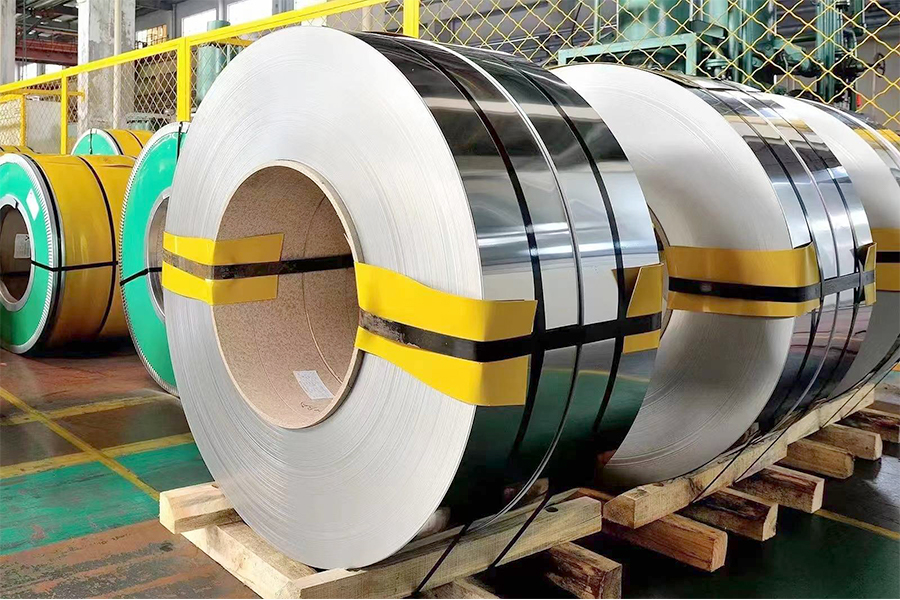Hastelloy alloy coils are renowned for their exceptional resistance to corrosion, making them indispensable in industries where materials face the harshest conditions. These coils are particularly known for their resilience in environments exposed to aggressive media such as acids, salts, and chlorine. What sets Hastelloy apart from other corrosion-resistant alloys is its unique ability to withstand several specific types of corrosion that challenge even the most advanced materials. To understand why Hastelloy stands out, it’s important to look at the types of corrosion it combats most effectively, how it performs compared to other alloys, and the implications for its industrial applications.
One of the primary forms of corrosion that Hastelloy excels in is pitting corrosion, a localized form of corrosion that occurs when the protective oxide layer on a metal surface breaks down, often due to aggressive chemicals like chlorides. Hastelloy is particularly resistant to pitting corrosion in chloride-containing environments, including seawater, brine, and wet chlorine. While other alloys such as stainless steel may suffer from rapid degradation in such environments, Hastelloy alloys can maintain their integrity for much longer periods. This makes Hastelloy the material of choice for industries such as chemical processing, petrochemical, and flue gas desulfurization, where components are regularly exposed to harsh, chloride-laden atmospheres. Additionally, Hastelloy alloys resist crevice corrosion, which typically occurs in confined spaces where stagnant conditions create a microenvironment conducive to corrosion. The ability of Hastelloy to withstand both pitting and crevice corrosion makes it highly reliable for use in reactors, pipelines, and heat exchangers in corrosive environments.

Another form of corrosion that Hastelloy stands out in resisting is stress corrosion cracking (SCC), which happens when a material is exposed to a corrosive environment while under stress. In industries such as aerospace, nuclear power, and oil and gas, where high-pressure environments are common, materials like stainless steel can become brittle and prone to cracking over time when exposed to stress and corrosive agents. Hastelloy’s excellent resistance to stress corrosion cracking, even in environments like hydrochloric acid, is one of the reasons it is so widely used in applications requiring long-term performance under extreme conditions. When compared to other high-performance alloys like Inconel or Monel, Hastelloy demonstrates superior resistance to SCC in various acid and chloride environments, giving it a critical edge in applications like chemical processing and power generation.
In addition to these forms of localized corrosion, Hastelloy is highly resistant to general corrosion, where metals gradually deteriorate over time due to constant exposure to corrosive media. For example, in sulfuric acid or phosphoric acid environments, Hastelloy maintains its structural integrity better than other corrosion-resistant alloys, which may experience significant thinning of their surfaces or complete failure after prolonged exposure. This is one of the reasons Hastelloy is preferred in industries such as pulp and paper production and in wastewater treatment, where corrosive chemicals are consistently used. In comparison, alloys like titanium and certain stainless steel grades may show vulnerabilities under the same conditions, such as surface scaling or the formation of pits.
What sets Hastelloy apart even further is its performance in oxidizing environments, where many materials are prone to corrosion from the presence of oxygen or other oxidizing agents. Hastelloy’s resistance to oxidizing acids like nitric acid is remarkable, which makes it an ideal material for use in processes involving high-temperature or high-pressure oxidizing conditions. When you compare Hastelloy to other alloys like titanium or Inconel, which also offer good corrosion resistance, Hastelloy shines in maintaining a consistent, stable oxide layer that prevents further degradation even in environments where oxygen levels are elevated.
In terms of its comparison to other corrosion-resistant alloys, Hastelloy holds a distinct advantage in a variety of challenging environments. While Inconel, Monel, and titanium are also known for their corrosion resistance, they each have specific limitations in certain applications. For example, Inconel alloys are excellent in high-temperature environments, but Hastelloy surpasses them in acidic and chloride-rich environments, especially under conditions of stress and high pressure. Monel, which excels in marine environments, can suffer from chloride stress corrosion cracking, whereas Hastelloy alloys offer superior resistance in such applications. Titanium, though resistant to many types of corrosion, can be more prone to attack in


 English
English русский
русский عربى
عربى 中文简体
中文简体
